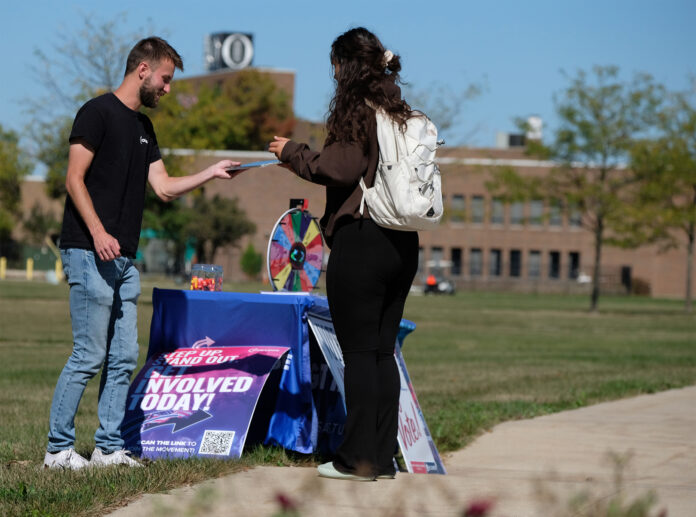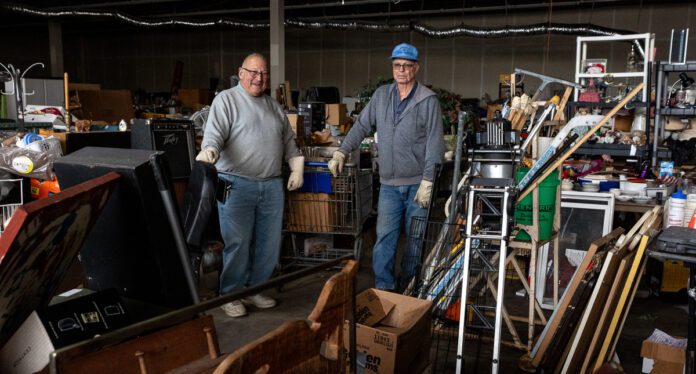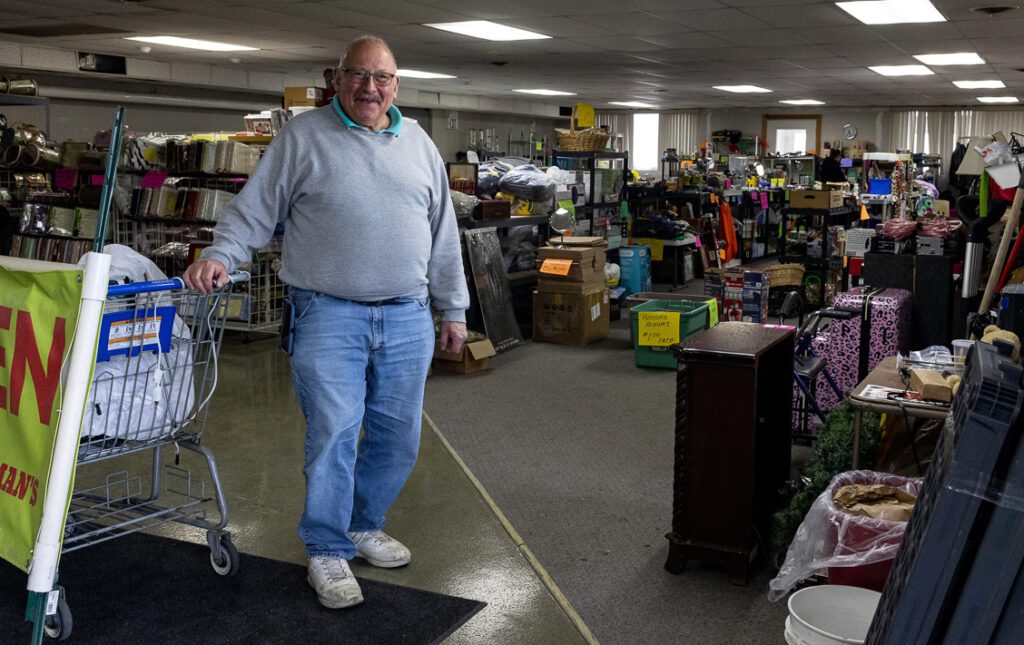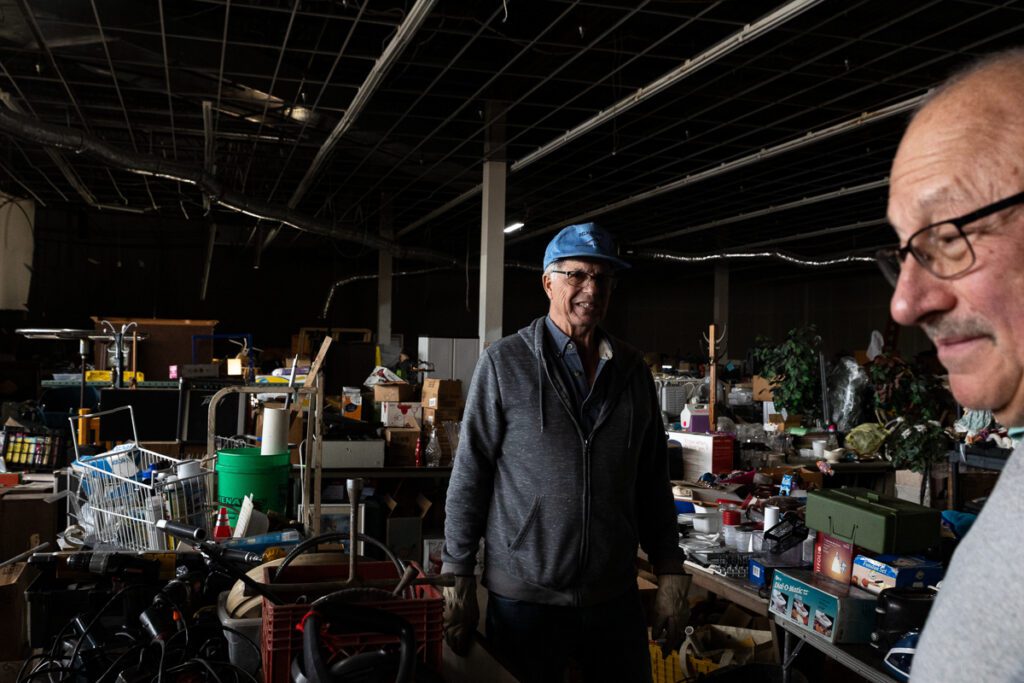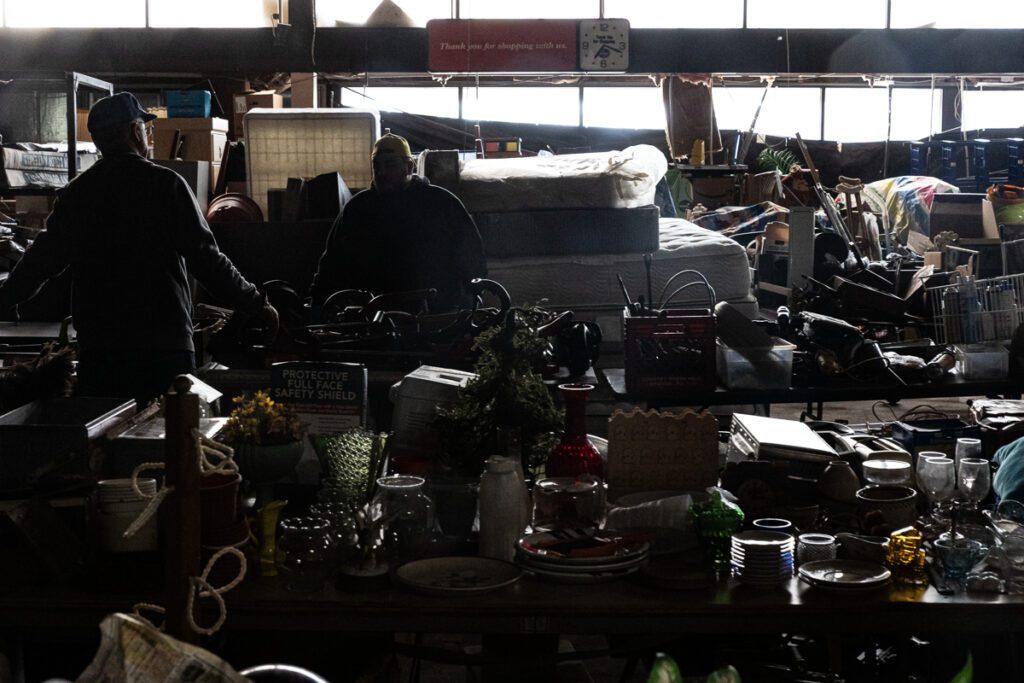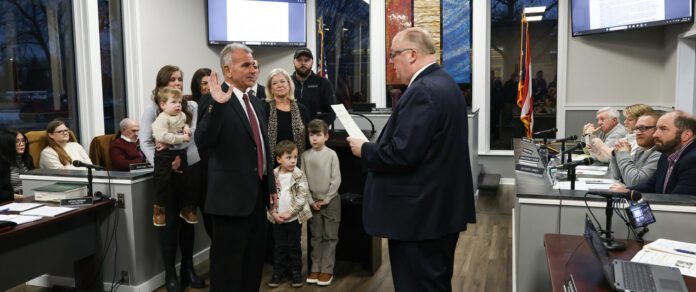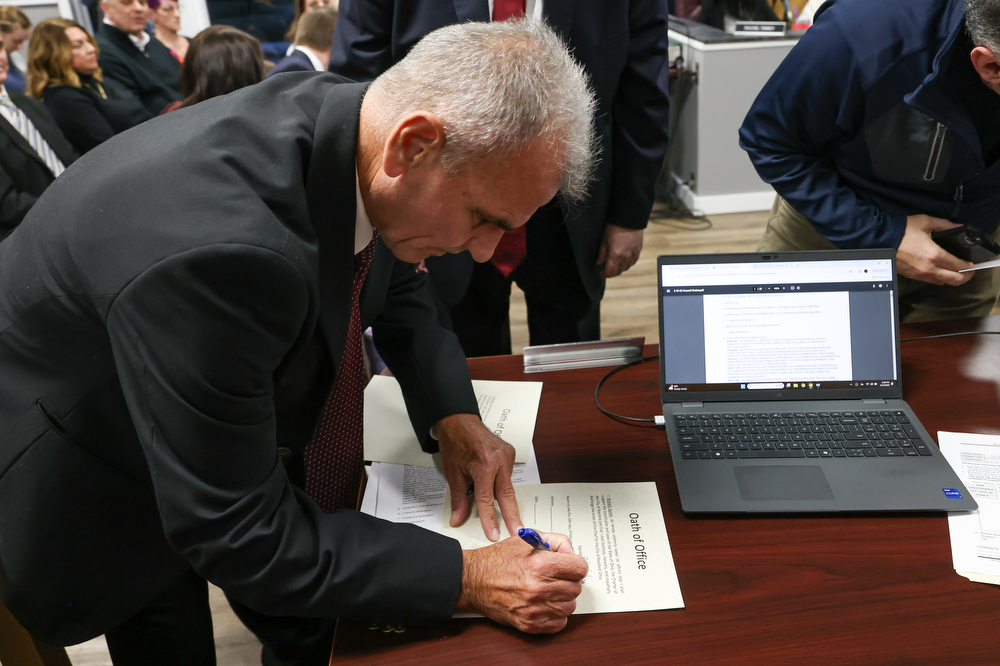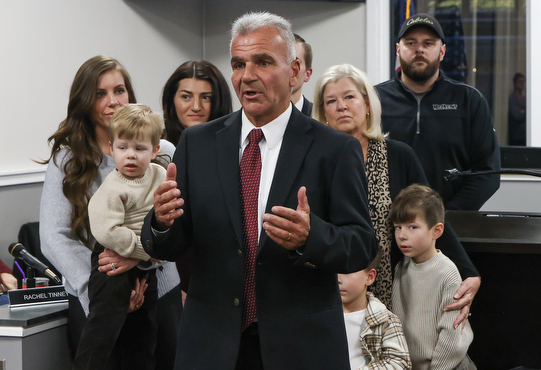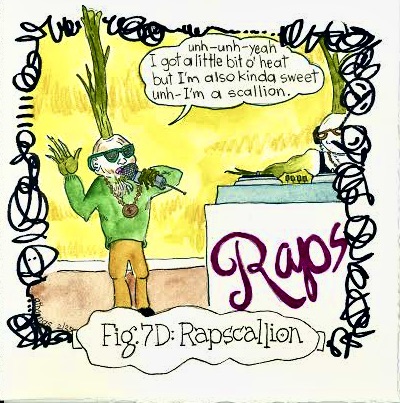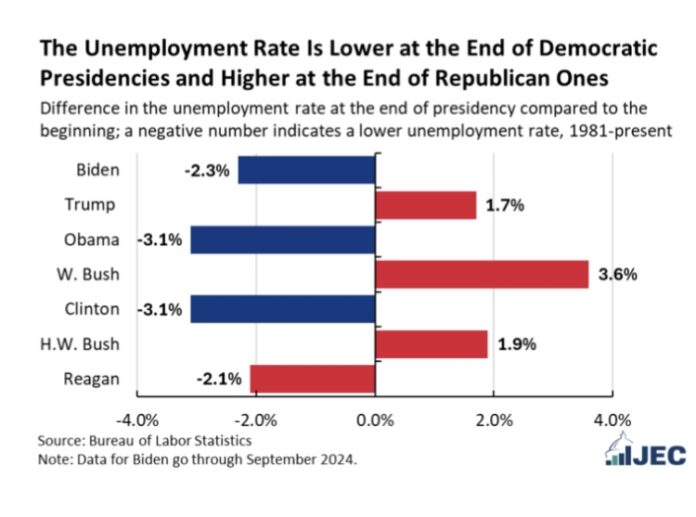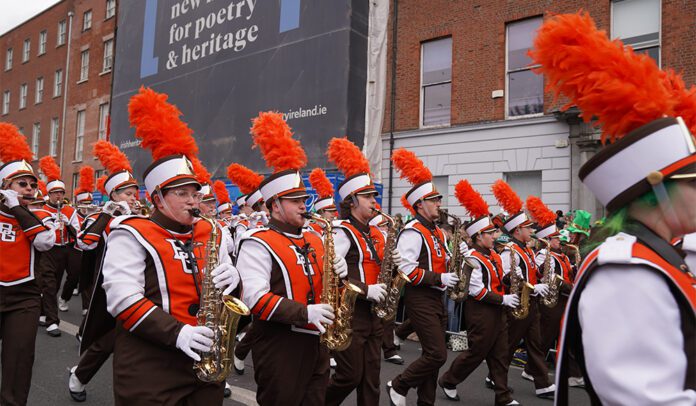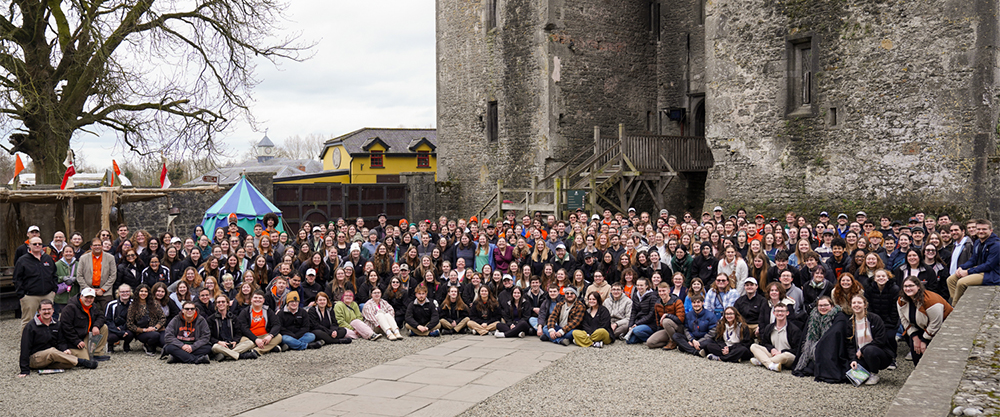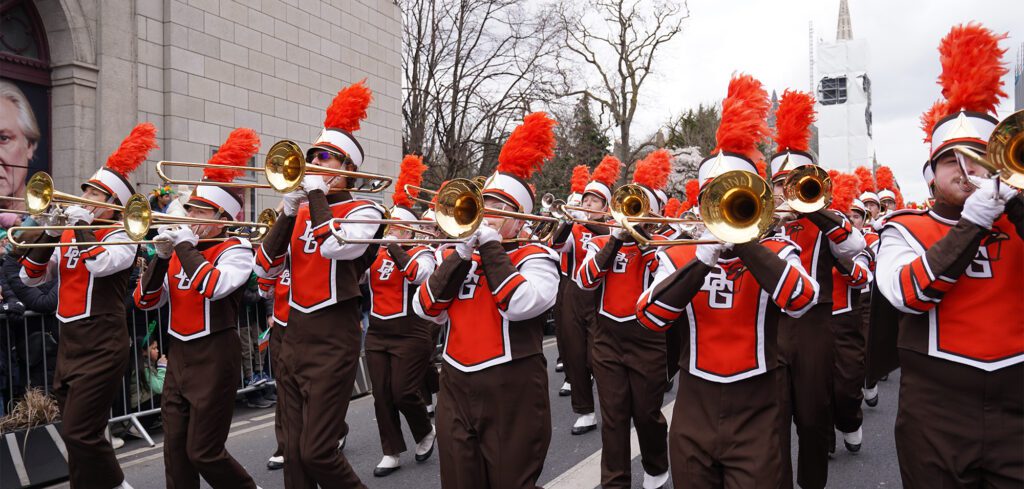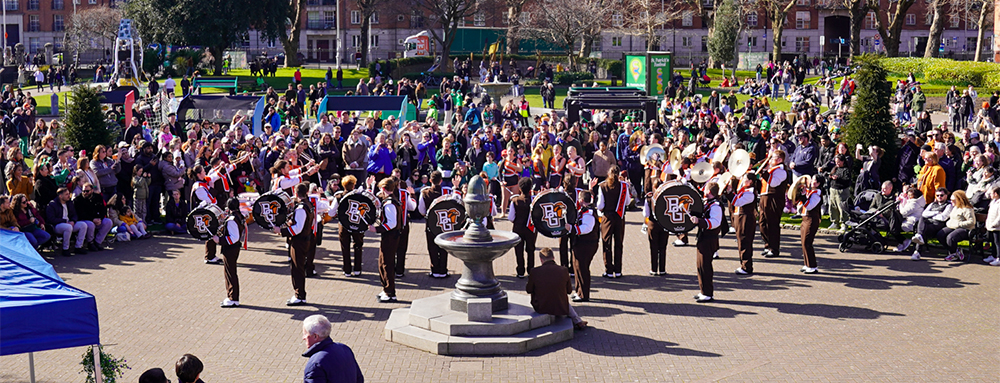Lucas County Board of Elections explains voting details, process
Toledo – With Election Day a month away, preparations are in full swing at the Lucas County Board of Elections office.
“We’re up and running and getting everything ready,” said Timothy Monaco, deputy director of the elections office. “It’s a wonderful time. It’s important to exercise your right to vote.”
Logistics that the staff and officers have been handling for weeks on behalf of Lucas County’s 303 voting precincts include preparing ballots, training precinct election officials, and getting early voting dates and times posted on their website.
Monaco said the most commonly asked question from voters during the past couple of weeks has been when absentee ballots will arrive in the mail.
Here’s the answer: Ohio voters can look for the absentee ballots starting Oct. 8, which is one day after registration ends for the Nov. 5 election.
The Lucas County Board of Elections staff doesn’t give predictions on voter turnout, Monaco said. But, according to state election records, 67 percent of registered Lucas County voters participated in the 2020 presidential election, and 66 percent did so in the 2016 presidential election. This participation includes absentee voting, early in-person voting and traditional Election Day voting.
Those choices are meant to help all eligible voters participate, whether they prefer going in person to a local polling site or to cast a ballot before they travel out of town.
“It’s important to make your plan as to who you are going to vote for,” Monaco said. “Make sure you make a plan and know what is on your ballot.”
While the presidential campaign is the key race of the Nov. 5 election, there are also races in Lucas County for local judges and city officials. For those who want to see the list ahead of time, ballot proofs are available for review on the election board’s website.
“Ballots will be three pages for everyone and four pages for some,” Monaco said.
While some people remember how they wish to vote when going to the polls, others find it helpful to bring paper notes or refer to a list on their phone, Monaco said. “Some folks really come prepared,” he said.
“It’s also important to be respectful at the location,” he added, referring to an Ohio law that prohibits photos of marked ballots. “We do ask that you limit cell phone use at the ballot.”
Many other election details are explained at lucascountyohiovotes.gov.
Election calendar
Key dates for the November 5 election:
- Military and overseas civilian voting: Started Sept. 20.
- Voter registration deadline: 9 p.m. Oct. 7.
- Early in-person voting season: Oct. 8.-Nov. 3.
- Absentee ballot postmark deadline: Nov. 4.
- Election Day: Nov. 5.
CAMPUS TALK
OWENS COMMUNITY COLLEGE STUDENTS SOUND OFF ABOUT VOTING
Question: How important is voting to you?

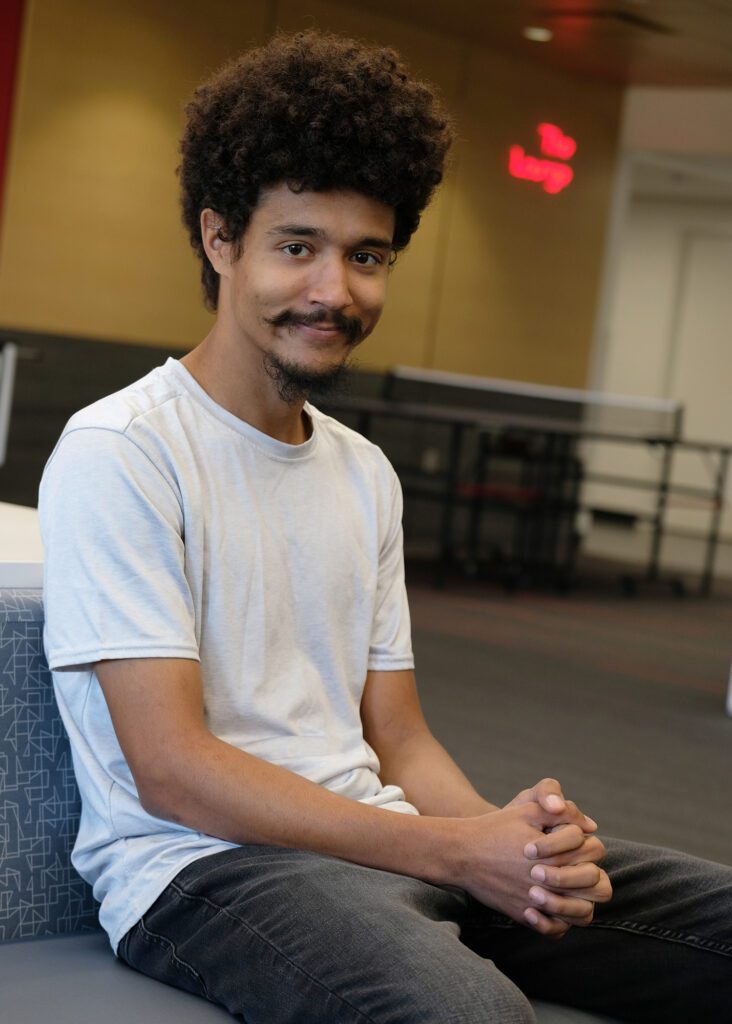

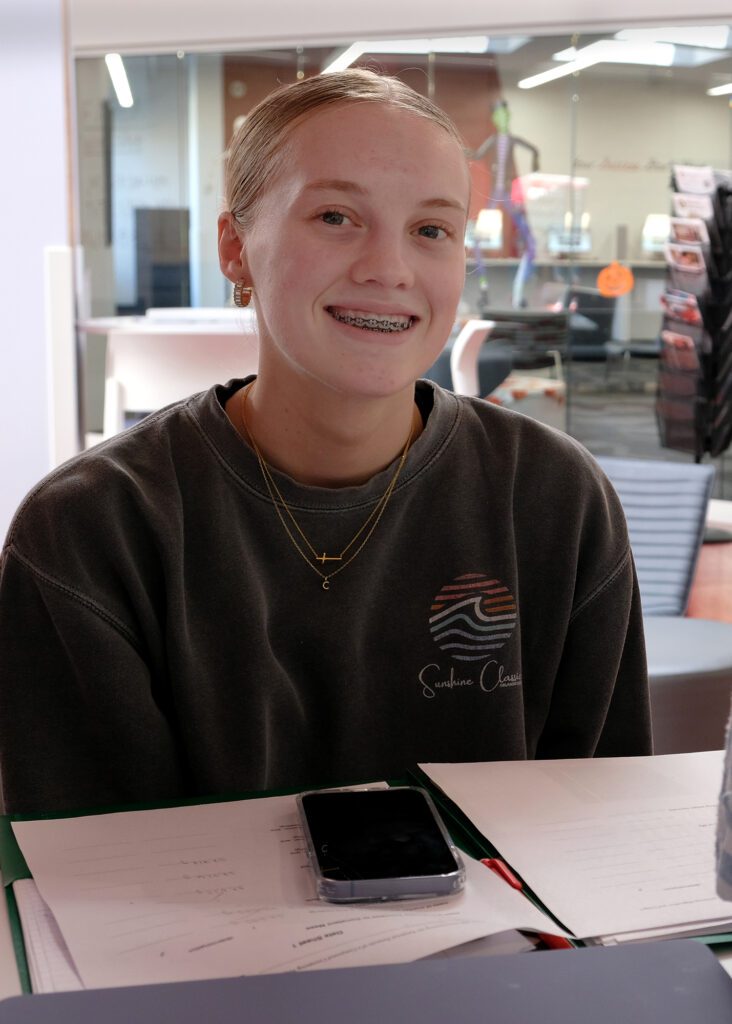

Voting is not my main concern, but it is pretty important because it is the future of America and I would like to have a say in what is gonna be my future. I usually try to vote on voting day, if I can’t I’ll do the absentee ballot.
Oliver Odendahl | EMT Major | Tontogany Resident
I am not a registered voter. If I was to lie to you I’d say yes. But honestly, I don’t have enough time … it’s not really a main priority, even though it should be. I do plan on voting at some point, maybe when I’m in my adult phase. Even though I’m not a registered voter I do think voting is important because it basically determines the society and the rules and regulations we live by.
James Johnson | Broadcast Media Technology Major | Toledo Resident
I’d say voting is very important. There’s certain aspects of it that do feel sort of depressing, when you think about it, because a lot of people would say people voting normally wouldn’t matter because of a small majority in the Electoral College – their votes matter 100 times more than your own. That’s what it feels like at least from what I know. It does feel a little degrading knowing that’s going to happen.
Nivant Dawson | Business Major | Toledo Resident
I think voting is important, but I’m not exactly sure why it’s important. I mean, there’s a lot of things that come from it. You’re voting for someone that you’re putting your trust and you’re faith into to guide us all in the right direction, but we just all don’t know what that direction is yet. So, we’re just kind of free-balling it, in a way. So, I don’t know … I’ve never voted before but this will be interesting. I really don’t know what all is involved. I just have a lot to learn about voting – like what I should be looking for in the leader I’m going to be voting for. So, yeah, it’s coming up soon. There’s a lot to learn.
Sydney Stanley | Chemistry Major | Millbury Resident
Voting is very important, especially in this day and age, when everything’s going on.
David Chase III | Literature Major | Toledo Resident
Registration details
Ohio voters must be registered by 9 p.m. Oct. 7 to be eligible to vote in the Nov. 5 election.
Residents can register to vote, look up voter registration, change their address, find an early voting location, look up Election Day polling location or track an absentee ballot at VoteOhio.gov.
Photo ID requirement
Bring your photo ID when voting. The options are:
- Current Ohio driver’s license or State of Ohio ID card.
- Interim ID form issued by Ohio Bureau of Motor Vehicles.
- U.S. passport or U.S. passport card.
- U.S. military ID card, Ohio National Guard ID card or U.S. Department of Veterans Affairs ID card.
A registered voter who has changed his or her name since the photo ID was issued will need to show proof of legal name change and sign a form. A photo ID card can show a former address if a current address is on file with the voting records. If you forget a photo ID, you can request a provisional ballot.
How to vote absentee
An absentee ballot in Ohio needs to be requested, signed, dated and submitted for each election. Military personnel and civilian overseas voters can file one application for all elections happening in a given year.
The application asks for the number on your Ohio driver’s license or Ohio ID card, last four digits of your social security number, or a photocopy of other eligible ID such as a U.S. passport or military ID.
Mailed absentee ballots must be postmarked by Nov. 4 and can be hand delivered to the Board of Elections on Nov. 5.
Additional instructions are on the Ohio Secretary of State’s website.
In-person early voting
Ohio’s in-person early voting season begins Oct. 8 and ends Nov. 3.
The Lucas County Early Vote Center is at 3737 W. Sylvania Ave. Suite 121 Entrance C (at the rear of the Lucas County Board of Elections building) in west Toledo.
Voting times and dates can be found at LucasCountyOhioVotes.gov.
Election Day voting
Polling sites are open in Ohio from 6:30-7:30 p.m. on Nov. 5. You can look up your polling location at VoteOhio.Gov.
What’s on the ballot?
A “ballot proof” is available for review on the Lucas County Board of Elections page. It lists candidates and ballot issues by precinct, so voters know what to expect.
For example: Six president/vice president candidate teams have declared in Ohio, with an additional write-in option available. Other candidate races include U.S. Senator, Lucas County Sheriff and openings on Toledo City Council.
Ohio Issue 1 is a proposed state constitutional amendment that has gained a lot of attention. This issue, if approved, would designate a redistricting commission to draw state legislative and congressional districts.
There are other issues locally, such as a proposed bond issue for the Toledo-Lucas County Public Library and a tax renewal request from the Toledo-Lucas County Port Authority.
Are ballot “selfies” allowed?
Ohio does not permit photos to be taken of a marked ballot. It’s actually a fifth-degree felony should that take place, according to Ohio law.
The “I Voted” Sticker
A traditionally popular way to showcase voter participation is through an “I voted” sticker, picked up on Election Day at the polling site.
Ohio’s current “I Voted” sticker design was adopted in 2019 through a student art contest. A red squiggle depicts a map of Ohio, nestled in a blue circle outline, with the phrase “Ohio Voted.”
Voters are invited to download the image to share on social media at the Ohio Secretary of State website. That website also has also a “future voter” coloring page for children available for download.
Is campaigning allowed at election sites?
Ohio does not allow election campaigning, also known as electioneering, within 100 feet of a voting site. This means no campaigning messages on attire such as shirts or hats, Monaco said.
Two small United States flags are placed at each voting site to designate the “neutral” zone where this applies.
Where is the Board of Elections office?
If you need to visit the Lucas County Board of Elections regarding a voting matter, that office moved about two years ago from its former location at One Government Center to 3737 W. Sylvania Road in West Toledo.
When are election numbers official?
Ballots cast on Election Day will be delivered in person to the Lucas County Board of Elections for the counting procedures.
There will be numbers reported after that count is complete.
The Ohio Secretary of State does not consider voter counts to be official until two or three weeks later, after provisional ballots are accounted for and to give time for absentee ballots to arrive that met the postmark deadline.

